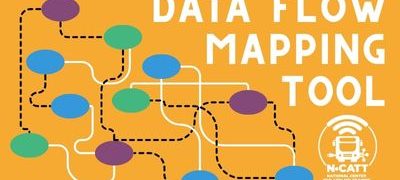Executive Summary
This Passive Data Collection Guidebook serves to provide an overview of the various passive data collection technologies available that can be utilized by transit agencies throughout the nation.
While new technologies can ease the burden of data collection, they can increase the complexity of maintaining and operating an agency’s assets. New technologies may interact with legacy systems in unexpected ways and managing the use of an agency’s resources to operate them – and derive the full benefit from them – can be challenging.
In this era of “big data”, more information is being collected automatically than ever before. These technologies hold tremendous potential for providers of public transportation to increase the efficiency and reliability of data previously collected “actively” (or manually), while also expanding the kinds of information that they can gather. However, these opportunities should be weighed against the ongoing needs of fully utilizing these technologies, especially for smaller agencies.
Several technologies are reviewed in this Passive Data Collection Guidebook. Some of the “key takeaways” and recommendations for each are summarized in Table 1:
| Technology | Key Recommendation/Takeaway |
| Automatic Vehicle Location | Best when used on the entire fleet.
Operations/on-road supervisory staff should be trained to “trust the data” and respond when conditions or issues arise that require interventions to get the best value from an AVL system and maintain on-time performance. |
| Driver Safety Tracking | Address any potential implications regarding the collective bargaining agreement prior to purchasing driver safety tracking systems. |
| Automated Passenger Counters | The quantity and type of data generated by automated passenger counters require robust data analysis capabilities and an active planning paradigm in the transit agency in order to get the most value from such systems. |
| Vehicle Health Monitoring | Analyze what new data a vehicle health system will provide versus what data it will provide that is already available from drivers and maintenance crews to help determine if this type of system is worth the cost.
If an agency can only afford this type of system for some buses (but not all) in the system, prioritize electric vehicles, given their relatively new technological needs. |
| Aggregated Mobile Phone Data | Transit agencies should consider “piggybacking” or “partnering” with other organizations (such as a Metropolitan Planning Organization) when purchasing this type of data technology, as other partners are just as likely to be using it.
This type of data can be helpful when conducting a system-wide study or redrawing routes for a system. Similar to automated passenger counters, it should be kept in mind that this technology generates a large quantity of data that will need to be analyzed and will require robust data analysis capabilities and an active planning paradigm in the transit agency. |
| Real-Time Data Applications | Although these are typically a benefit of having automated passenger counters and automatic vehicle location systems, it is important that an agency keep its input data – particularly GTFS data – as up to date as possible, as they form the foundation of these systems. |
| Mobile Fare Payment | Agencies should first address the access and Title VI issues associated with mobile fare payment before adopting any particular system or vendor – with the proper preparations, these systems can become an additional option that do not place any undue burden on the “unbanked” or “underbanked”. |
Introduction
The Community Transportation Association of America (CTAA), through its National Center for Applied Transit Technology (N-CATT), has prepared this Passive Data Collection Guidebook as a reference guide outlining the technologies that can allow transit agencies and operators to collect various types of data in a “passive” manner. Passive data collection efforts are those that do not require the active collection of data either by surveyors, bus operators or other agency/operator personnel. They typically utilize electronic and/or digitized devices to collect and store the data, while the examination, compilation and analysis of the data requires the use of skilled personnel.
The Passive Data Collection Guidebook provides an overview of some of the uses of passive data collection technology, and then presents interviews with some vendors of passive data collection systems. These are then followed by case studies of some transit agencies throughout the nation, which illustrate some “real world” uses of the passive data collection technologies, examples of how they were adopted, and limitations on how the technology was deployed.
The intent of the Passive Data Collection Guidebook is to disseminate information to transit agencies and operators throughout the nation (particularly to small and medium size systems – meaning those systems with up to about 50 vehicles in maximum service in any given transit mode), and is specifically aimed at assisting transit managers (and Operations Managers, particularly) with understanding the use cases of different passive data collection systems, as this field is evolving quickly and presents a “moving target.”
Finally, the Passive Data Collection Guidebook presents a series of findings in terms of the relative utility and benefit of the various data collection technologies that are available.





